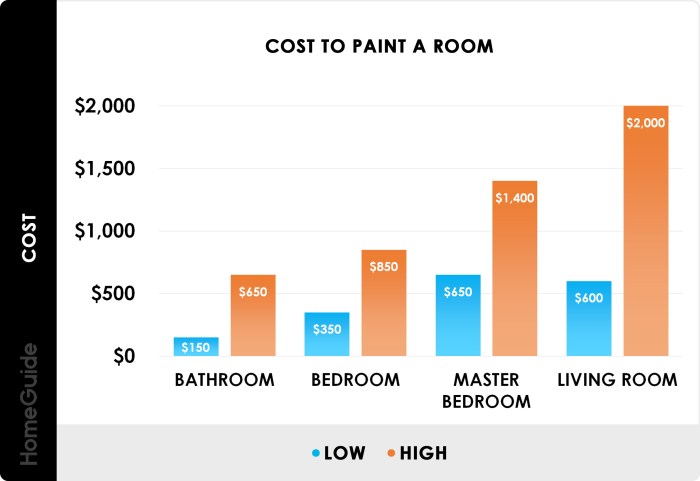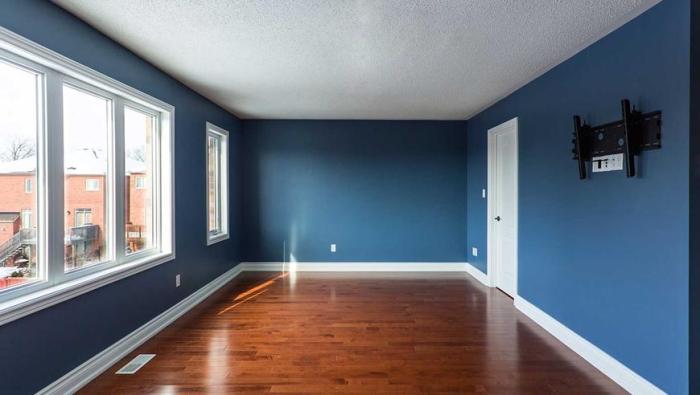The Ultimate Guide to Interior Painting Cost
Exploring the world of interior painting cost, this guide aims to provide a comprehensive understanding of the factors influencing pricing, average cost ranges, cost-saving tips, and estimating project costs. Dive in to discover all you need to know about the cost of painting your interiors.
Factors influencing interior painting cost
When it comes to determining the cost of interior painting, several factors come into play. These factors can greatly impact the overall price you can expect to pay for your painting project.
Size of the area to be painted
The size of the area to be painted is a significant factor that influences the cost of interior painting. Larger rooms or spaces will require more paint, supplies, and labor, resulting in a higher overall cost.
Paint quality
The quality of the paint used can also affect the cost of interior painting. Higher quality paints tend to be more expensive but can offer better coverage, durability, and a more professional finish. Opting for premium paint brands can increase the overall cost of the project.
Complexity of the project
The complexity of the painting project can impact pricing as well. Projects that involve intricate details, multiple colors, or special techniques may require more time and skill from the painters, resulting in a higher cost. Additionally, factors like wall texture, trim work, or repairs needed before painting can also contribute to the overall price.
Average cost range for interior painting
Interior painting costs can vary based on several factors, including the size of the room, the type of paint finish chosen, and the labor costs involved. On average, homeowners can expect to pay between $2 to $6 per square foot for interior painting projects.
This cost range typically includes labor, materials, and any additional expenses.
Cost Differences Based on Paint Finishes
When it comes to different paint finishes, the cost can vary significantly. For example, flat paint is usually the least expensive option, ranging from $1 to $3 per square foot. On the other hand, high-gloss paint tends to be more costly, with prices ranging from $3 to $6 per square foot.
Semi-gloss and satin finishes fall somewhere in between, with costs averaging around $2 to $4 per square foot. Homeowners should consider their budget and desired look when choosing a paint finish for their interior painting project.
Labor Costs Contribution
Labor costs also play a significant role in the overall pricing of interior painting projects. Professional painters typically charge an hourly rate, which can vary depending on their experience and location. On average, homeowners can expect to pay between $25 to $100 per hour for labor costs.
The size of the project and the complexity of the job can also impact labor costs. It's essential to obtain multiple quotes from different painting contractors to ensure a competitive price.
Additional Costs in Interior Painting Projects
In addition to the cost of paint and labor, there may be additional expenses involved in interior painting projects. These can include the cost of primer, tape, brushes, rollers, drop cloths, and other painting supplies. Homeowners should also consider any necessary repairs or surface preparation work that may add to the overall cost.
It's essential to factor in these additional costs when budgeting for an interior painting project.
Cost-saving tips for interior painting

When it comes to painting the interior of your home, there are several strategies you can implement to save on costs without compromising on quality. From tackling the painting project yourself to purchasing paint in bulk, these cost-saving tips can help you achieve a fresh look for your space within budget.
DIY Painting
One of the most effective ways to reduce the cost of interior painting is by taking on the project yourself. By eliminating labor costs associated with hiring professionals, you can save a significant amount of money. However, it's important to ensure you have the necessary skills and equipment to complete the job successfully.
Buying Paint in Bulk
Another way to save on interior painting costs is by purchasing paint in bulk. Many paint suppliers offer discounts when buying larger quantities of paint, which can result in substantial savings
Minimizing Wastage
To further reduce costs, it's essential to minimize wastage of paint during the painting process. Properly sealing paint cans when not in use, using the right amount of paint for each coat, and storing leftover paint for touch-ups can help prevent unnecessary waste.
By being mindful of paint usage, you can optimize the amount of paint needed for the project.
Estimating interior painting cost

Estimating the cost of an interior painting project is crucial for proper budgeting and planning. It involves considering various factors to come up with an accurate estimate that aligns with your needs and expectations.
Breakdown of Cost Estimation Process
- Start by measuring the square footage of the area to be painted. This will help determine the amount of paint needed.
- Consider the type and quality of paint you want to use, as this will impact the overall cost.
- Factor in the cost of additional materials such as primer, brushes, rollers, and masking tape.
- Calculate the labor cost by estimating the time required to complete the project and the hourly rate of the painters.
- Add any additional costs such as furniture moving, wall repairs, or trim painting.
Importance of Obtaining Multiple Quotes
Obtaining multiple quotes from different painting contractors is essential to get a better understanding of the market rates and to ensure you are not overpaying for the services. It also allows you to compare the quality of work and services offered by different contractors before making a decision.
Negotiating Prices with Painting Contractors
- Do your research and have a clear idea of the average cost of the project in your area.
- Communicate openly with the contractors about your budget constraints and negotiate for a reasonable price.
- Consider offering to do some of the prep work yourself to reduce labor costs.
- Ask for a detailed breakdown of the costs in the quote to identify any areas where you can potentially save money.
Conclusion

In conclusion, understanding the various aspects of interior painting cost is vital for anyone looking to embark on a painting project. By considering factors such as size, paint quality, labor costs, and cost-saving strategies, you can make informed decisions and achieve the desired results within your budget.
FAQ Section
What factors can impact interior painting cost?
Factors such as size of the area, paint quality, and complexity of the project can influence the cost.
How can I reduce the cost of an interior painting project?
You can save costs by considering DIY painting, buying paint in bulk, and minimizing wastage during the project.
What is the average cost range for interior painting?
The cost can vary based on factors like paint finishes and labor costs, but typically falls within a certain range.
How do I estimate the cost of an interior painting project?
Calculate the estimated cost by factoring in materials, labor, and obtaining multiple quotes for accurate estimates.
Are there additional costs involved in interior painting projects?
Yes, there can be additional costs such as equipment rentals or repair work that may impact the overall cost.